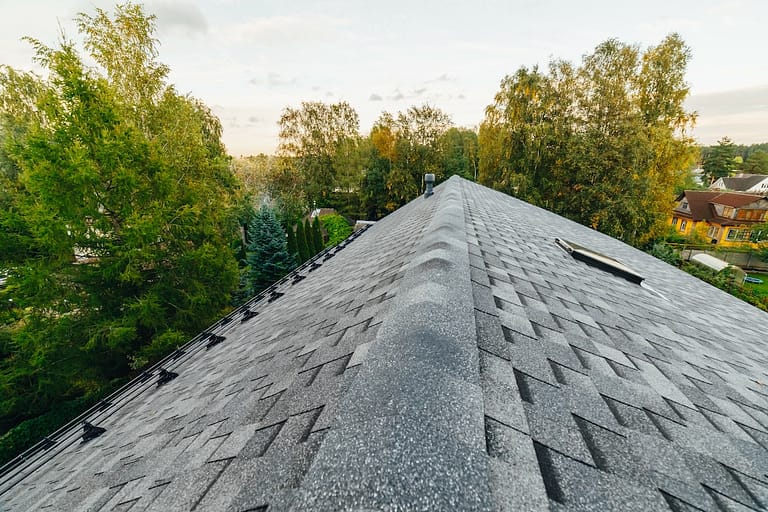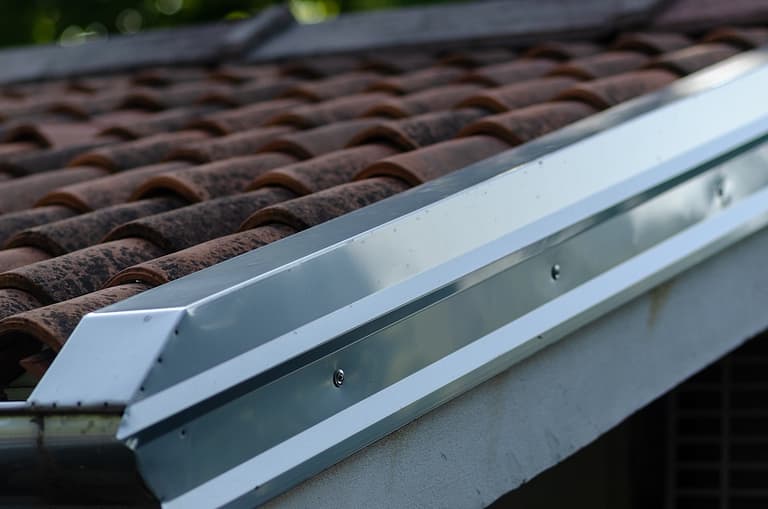Maintaining the roof of a church is no small task. Whether your church building is a centuries-old masterpiece or a more modern structure, selecting the right roofing material plays a critical role in maintaining the beauty, safety, and integrity of the space over time. However, with so many options available and the added pressure of making a decision for a cherished place of worship, the process can feel overwhelming.
This is where hiring a professional roofing contractor can make a significant difference. At G. Cannon Roofing, we specialize in church roofing projects and ensure that the process is:
- Smooth
- Informed
- Tailored to your congregation’s unique needs
To help you get started, here’s a detailed guide to various church roofing material options, their pros and cons, and how to determine the best solution for your place of worship.
Factors to Consider When Choosing Church Roofing Materials
Before we explore the material options, it’s essential to understand the key factors that should influence your roofing decision. Churches often have distinct architectural features and serve as gathering places for spiritual connection, making their roof requirements unique. Here’s what to keep in mind:
- Longevity: Churches are meant to stand the test of time, and so should their roofs. Longevity of the material is a key consideration, as replacements or major repairs can disrupt services and be costly.
- Budget: Most churches operate on tight budgets, and roofing decisions often require balancing cost with quality. It’s important to think not just about upfront costs but also long-term maintenance expenses.
- Aesthetic Compatibility: The roof is a vital part of a church’s overall appearance. The roofing material should complement the architecture and maintain the visual appeal of the structure.
- Energy Efficiency: Many churches aim to balance comfort and cost savings. Energy-efficient roofing materials can help regulate indoor temperatures and lower utility bills, making them an attractive option.
- Weight and Structure: Some roofing materials, such as slate or clay tiles, are significantly heavier than others. A structural assessment is necessary to ensure the church building can handle the added weight.
- Weather Resistance: The durability of the roofing material against harsh weather conditions, such as heavy rain, wind, snow, or extreme heat, is a crucial factor for churches located in climates prone to such challenges.
Now that we’ve established the key factors to keep in mind, let’s explore the most popular roofing materials for churches.
7 Popular Roofing Materials for Churches
When selecting roofing materials for churches, it’s essential to balance functionality, durability, and aesthetics. Different materials offer unique benefits and cater to varying architectural styles, making it important to choose one that complements the church’s design while meeting practical needs. Below, we’ll explore some of the most commonly used roofing materials and their advantages.
1. Asphalt Shingles
Asphalt shingles are cost-effective, easy to install, and available in a variety of colors and styles to suit different church designs.
✅ Pros:
- Affordable and widely available
- Lightweight, reducing stress on a church’s structure
- Available in a variety of colors and styles to mimic more expensive materials
- Easy and quick to install
❌ Cons:
- Limited lifespan (20–30 years) compared to other materials
- Susceptible to wind and storm damage
⭐️ Ideal For:
Churches looking for an inexpensive and straightforward roofing material in regions with mild weather conditions.
2. Slate Roofs
Slate roofs are known for their exceptional durability, with a lifespan often exceeding 100 years, making them a long-term investment for churches.
✅ Pros:
- Exceptional longevity, easily lasting over 100 years
- Stunning natural appearance that enhances historic architecture
- Fire-resistant and environmentally friendly
❌ Cons:
- Extremely heavy, requiring a thorough structural inspection
- High upfront costs
- Installation requires skilled professionals familiar with slate roofing
⭐️ Ideal For:
Historical churches or those with Gothic designs that prioritize durability and a classic aesthetic.
3. Metal Roofing
Metal roofing is a popular option due to its modern appearance, lightweight nature, and impressive durability.
✅ Pros:
- Long-lasting, often with a lifespan of 40–70 years
- Resistant to weather, including hail and strong winds
- Lightweight and easy for most structures to accommodate
- Energy-efficient, reflecting heat and reducing cooling costs
- Available in multiple finishes and colors to match the church’s architecture
❌ Cons:
- Higher upfront costs compared to asphalt shingles
- Can be noisy during rain unless lined with proper insulation
⭐️ Ideal For:
Churches in areas with extreme weather or those looking for a low-maintenance solution with modern appeal.
4. Clay Tiles
Clay tiles are a durable and visually appealing roofing option that adds a timeless charm to any structure.
✅ Pros:
- Highly durable, lasting up to 100 years with proper care
- Fire-resistant and environmentally friendly
- Distinctive look that complements Spanish or Mediterranean-style churches
❌ Cons:
- Expensive to purchase and install
- Very heavy, requiring additional structural support
⭐️ Ideal For:
Churches with ornate or traditional architecture that want to maintain an elegant appearance.
5. Synthetic Roofing Materials
Synthetic roofing materials offer a versatile and cost-effective alternative to traditional options. They are designed to mimic the appearance of materials like slate, wood, or tile while providing enhanced durability and reduced maintenance.
✅ Pros:
- Designed to mimic premium materials like slate or clay tiles at a fraction of the price
- Lightweight and easy to install
- High durability with added resistance to weather and UV rays
❌ Cons:
- May lack some of the authenticity of natural materials
- Not as widely recognized for heritage or restoration projects
⭐️ Ideal For:
Modern churches or those seeking a cost-effective solution that maintains the desired aesthetic.
6. Wood Shakes or Shingles
Wood shakes or shingles offer a traditional and timeless aesthetic that complements historic or rustic church designs. While they provide natural beauty and excellent insulation, they require regular maintenance to ensure longevity and prevent issues such as rot or insect damage.
✅ Pros:
- Natural, charming appeal that suits churches in rural or rustic settings
- Effective insulation properties, keeping interiors cooler in summer and warmer in winter
❌ Cons:
- Requires regular maintenance and treatment to prevent rot, mold, and insects
- Shorter lifespan than other premium materials (20–40 years)
- Not fire-resistant unless specifically treated
⭐️ Ideal For:
Small churches or chapels in areas where a natural, traditional look is desired.
7. Flat Roofing Options (EPDM, TPO, or Built-Up Roofs)
Flat roofing options, such as EPDM, TPO, or built-up roofs, are ideal for modern designs or buildings with minimal pitch. They provide excellent durability, ease of installation, and are often more cost-effective compared to sloped alternatives.
✅ Pros:
- Cost-effective and easy to install
- Lightweight and suitable for flat roof structures
- Minimal maintenance required
❌ Cons:
- Lack of aesthetic appeal compared to pitched roof materials
- May not be as long-lasting as premium pitched roof options
⭐️ Ideal For:
Modern churches or community centers with flat or low-slope roof designs.
Why Hiring a Professional Roofing Contractor Matters
Now that you’re familiar with the various roofing materials, it’s worth emphasizing how critical it is to enlist the help of a professional roofing contractor to guide you through the process. Here’s why:
- Expertise in Church Structures: A professional contractor understands the unique challenges that come with church roofing, including preserving architectural integrity and ensuring longevity.
- Tailored Recommendations: With so many materials to choose from, a contractor can assess your building’s structure, budget, and aesthetic goals and recommend the ideal solution.
- Efficient Installation: Roofing a church often involves working around schedules, including services and events. Professionals can complete the job efficiently while minimizing disruption to the congregation.
- Safety Assurance: Roofing projects involve heavy materials, high altitudes, and specialized tools. Hiring professionals mitigates the risk of injury and ensures the job is done safely.
- Warranties and Quality Assurance: Professional contractors often provide workmanship guarantees and warranties, giving you peace of mind about your investment.
Key Steps in the Church Roofing Process
Restoring or repairing a church roof requires careful planning and attention to detail to preserve the building’s architectural integrity and ensure longevity. The process involves several key steps, each designed to address specific challenges and deliver high-quality results. Below, we outline the essential steps in the church roofing process to provide a clear understanding of what to expect.
- Schedule an Inspection: A professional contractor will evaluate the condition of your existing roof and recommend whether a repair or replacement is necessary.
- Discuss Your Options: Based on your church’s specific needs, your contractor will guide you through material choices and potential designs.
- Create a Budget: Work with your team to establish a realistic budget that takes both upfront and long-term costs into account.
- Installation: Allow skilled professionals to handle the installation process, ensuring quality work with minimal disruptions.
- Ongoing Maintenance: Request a maintenance plan to ensure your investment stays in excellent condition for years to come.
The Go-To Team For Your Church Roof Replacement
Choosing the right roofing material for your church is an important decision that requires careful consideration of functionality, aesthetics, and budget. While the process may seem daunting, hiring a professional roofing contractor ensures you’ll have knowledgeable guidance every step of the way.
At G. Cannon Roofing, we specialize in church roofing and are passionate about preserving and enhancing sacred spaces. Whether your roof needs a simple repair or a complete replacement, our team is here to deliver expert solutions tailored to your building’s unique needs.
Get in touch today for a free consultation and make your church roofing project a seamless and stress-free experience!








